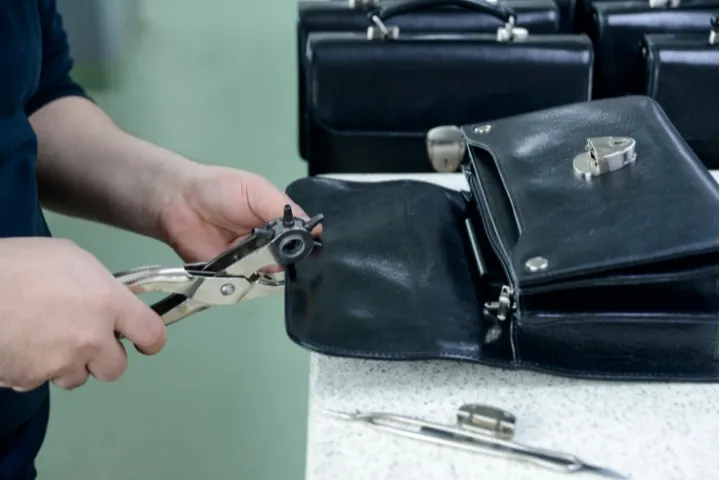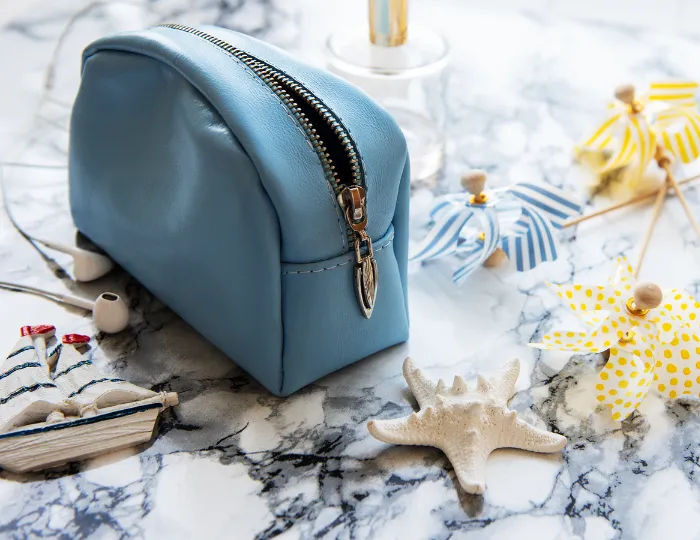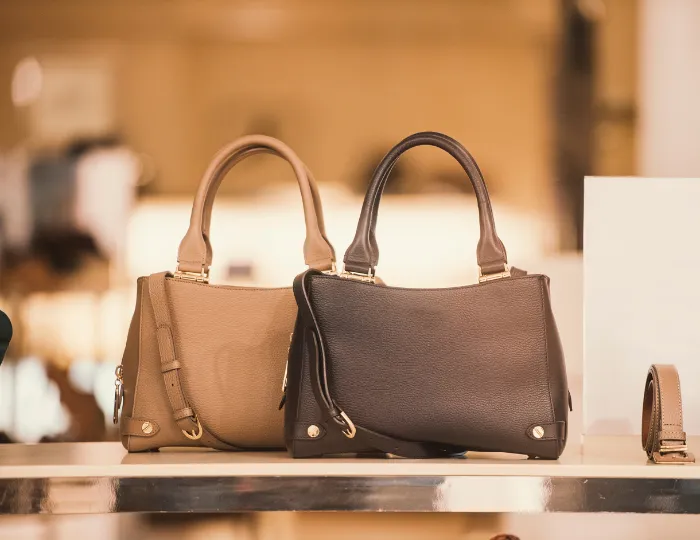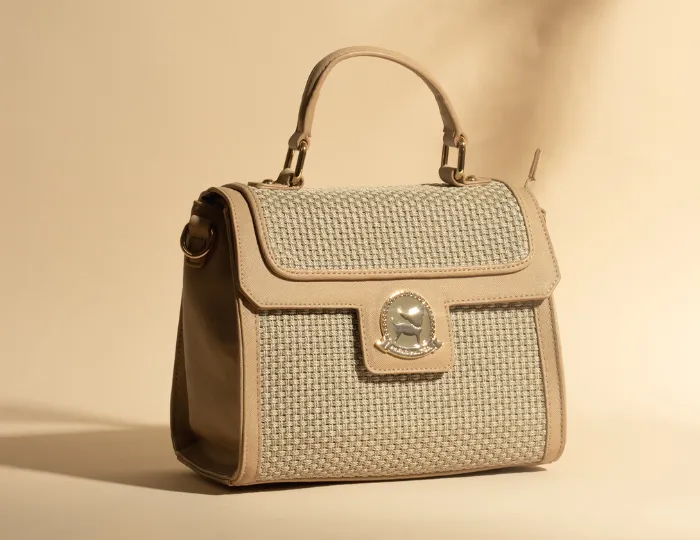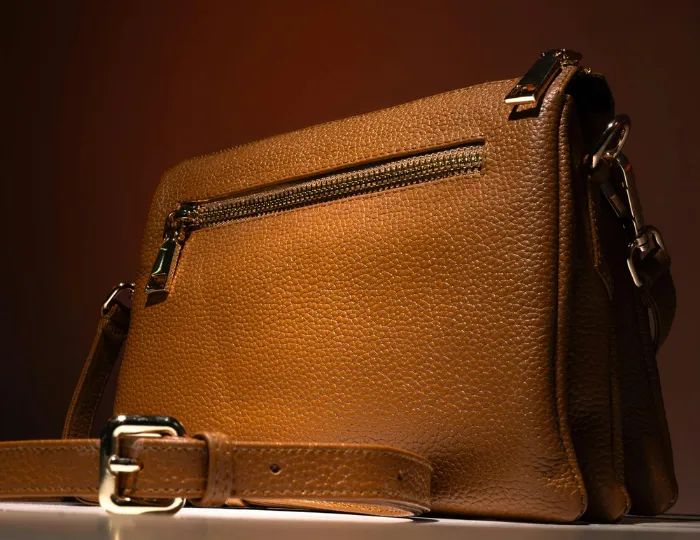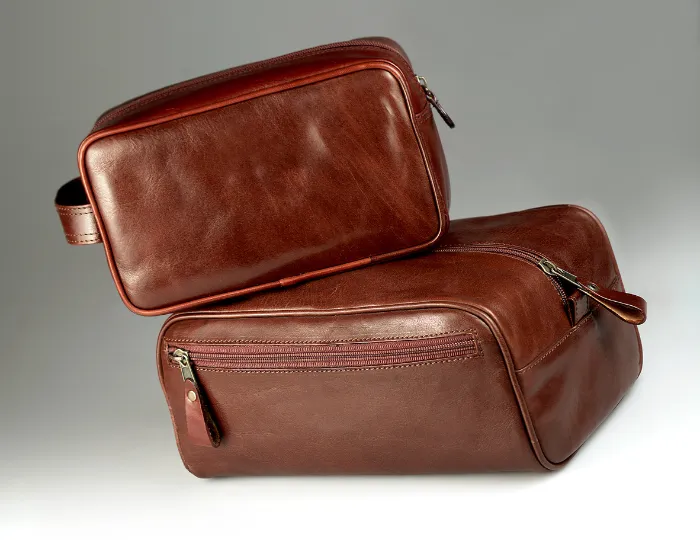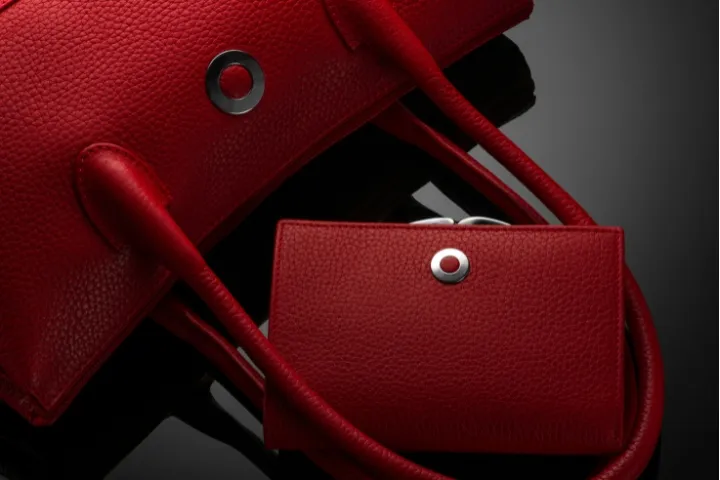Leather bags do more than carry belongings—they convey stories of heritage, craftsmanship, and brand promise. In 2025’s competitive marketplace, selecting the right manufacturing partner can transform your product line from “just another accessory” into a bestseller. Imagine launching a capsule collection where every bag arrives on time, with flawless stitching, patina-ready hides, and eco‑friendly credentials that resonate with conscious consumers. That’s the power of partnering with an industry leader.
Choosing the right leather‑bag manufacturer boils down to three essentials: high‑quality materials, dependable production processes, and transparent ethical practices. When you align on these, you secure superior products, consistent delivery, and stronger brand loyalty—all while protecting margins.
Your next decision point might hinge on a 2‑day prototype turnaround or a factory’s SMETA audit score—details that can make or break your launch. In the sections below, you’ll find actionable insights, data‑driven comparisons, and real‑world examples that help you navigate material grades, lead times, sustainability practices, and global manufacturing hubs. Ready to dig in? Let’s start by understanding why this choice matters so much.
The Importance of Choosing the Right Leather Bag Manufacturer
Choosing a manufacturing partner isn’t just about price—it shapes product quality, brand reputation, and long‑term profitability. A top‑tier supplier guarantees:
- Material Consistency: Access to full‑grain Italian hides, vegetable‑tanned leathers, or chrome‑tanned options, all vetted for uniform thickness and tensile strength.
- Craftsmanship Control: Inline inspections, AQL checks, and final cosmetic audits ensure every bag meets your standards.
- Reliability of Delivery: Clear production schedules, buffer capacities, and logistics partnerships minimize delays, even in peak seasons.
- Brand Alignment: Private‑label embossing, custom packaging, and co‑marketing support reinforce your brand identity.
- Risk Mitigation: Certifications like ISO9001 and BSCI protect against non‑compliance, recalls, and reputational damage.
Real‑World Story: A mid‑sized accessory brand nearly missed holiday sales after switching to a low‑cost supplier—prototype delays and inconsistent leather led to high return rates. By partnering with an ISO9001‑certified factory offering rapid prototyping, they cut sampling time from 14 to 4 days and improved first‑pass yield to 98%.
How Does Material Selection Affect Your Brand’s Success?
Tactile Appeal & Durability:
-
-
Full‑grain leather develops a rich patina; corrected‑grain may crack or peel.
-
Vegetable‑tanned hides resist stretching and compress without losing shape.
-
Visual Cohesion:
-
-
Consistent hide thickness ensures stitching lines remain straight and hardware sits flush.
-
Uniform dye penetration prevents color blotches across multiple units.
-
Customer Perception:
-
-
Premium materials justify higher price points and cultivate brand prestige.
-
Eco‑tanned or LWG‑certified hides attract sustainability‑focused audiences.
-
Cost Implications:
-
-
Top‑grade leathers cost 30–50% more but reduce returns and increase lifetime value.
-
Lower‑grade hides may require additional finishing steps, increasing labor costs.
-
What Role Do Quality‑Control Processes Play in Minimizing Risk?
Inline Inspections:
-
-
Real‑time stitching audits catch loose threads or skipped stitches before escalation.
-
Regular zipper‑pull strength tests ensure hardware reliability under load.
-
AQL (Acceptable Quality Limit) Standards:
-
-
Factories maintain AQL ≤ 2.5 for luxury goods—no more than 2.5% defect rate per batch.
-
Detailed QC reports document defect types, enabling continuous process improvement.
-
Third‑Party Audits & Certifications:
-
-
ISO9001 systems standardize procedures, reducing variance across production lines.
-
SMETA/BSCI audits verify labor conditions, protecting your brand against ethical breaches.
-
Final Cosmetic Reviews:
-
-
Color‑matching checks ensure all units match the approved sample.
-
Surface inspections detect scratches, stains, or dye inconsistencies prior to shipment.
-
Why Is Reliable Delivery Critical for Brand Reputation?
Predictable Lead Times:
-
-
Accurate production schedules (e.g., 15–20 days) prevent missed launch dates.
-
Buffer capacities handle rush orders without compromising quality.
-
Logistics Partnerships:
-
-
Integrated freight forwarding reduces customs delays and documentation errors.
-
Bonded‑warehouse options allow pre‑positioning inventory near target markets.
-
Communication & Transparency:
-
-
Weekly status reports and shared dashboards keep you informed of progress and potential delays.
-
Early warning systems (e.g., material shortage alerts) enable proactive mitigation.
-
Customer Trust & Loyalty:
-
-
Consistent on‑time delivery builds retailer and end‑consumer confidence.
-
Avoiding stockouts during peak sales seasons protects your market share.
-
What to Consider When Looking for the Right Leather Bag Manufacturer
1. Experience
Depth of experience in leather craftsmanship ensures a manufacturer has refined techniques over time, delivering consistent quality and the capability to execute intricate designs.
- Decades of operation vs. new entrants
- Proven track record with similar brands or product types
- Case studies or portfolios showcasing past successes
2. Leather Quality
The grade and origin of leather directly impact durability, feel, and patina development. Top partners will source from reputable tanneries and provide test reports.
- Full‑grain, top‑grain, corrected‑grain distinctions
- Vegetable‑tanned vs. chrome‑tanned vs. eco‑tanned
- Third‑party lab data on tensile strength, dye fastness
3. Customization Options
Your brand’s identity depends on distinct details—embossing, hardware finishes, lining choices, and packaging. A flexible manufacturer supports bespoke specifications.
- Private‑label embossing or debossing
- Hardware plating options
- Custom linings, tags, dust bags, and packaging
4. Manufacturing Process
Understanding each step—from hide selection to final inspection—helps gauge consistency and lead times. Transparent workflows minimize surprises.
- In‑house tanning, cutting, stitching vs. outsourced steps
- Inline quality checkpoints and digital tracking
- Sample‑to‑production workflows and revision cycles
5. Product Range
A broad product range indicates versatility; a niche focus may mean deeper expertise. Match their specialties to your catalog needs.
- Handbags, belts, wallets, backpacks, small goods
- Volume capacity across different product lines
- Cross‑category R&D for material or functional innovations
6. Reputation and Reviews
Client testimonials and third‑party reviews reveal reliability, communication quality, and after‑sales support. Look beyond marketing claims.
- Verified buyer feedback on Alibaba, Global Sources
- Industry awards or media features
- Referrals from existing brand partners
7. Pricing and Minimum Order Quantity (MOQ)
Balance budget constraints with quality expectations. Transparent pricing models and scalable MOQs allow you to test new designs without overcommitting.
- Sample fees vs. production unit costs
- Tiered pricing for volume discounts
- Flexible MOQ for seasonal or limited runs
8. Transparent Communication and Support
Efficient, proactive communication prevents misunderstandings and delays. Dedicated account managers and clear escalation paths are essential.
- Single point of contact vs. rotating teams
- Regular status updates via email, WeChat, Asana
- Rapid response to design queries and issue resolution
9. Shipping and Delivery Capabilities
Reliable logistics partners and clear lead‑time estimates ensure on‑time launches, especially during peak seasons.
- FOB, CIF, DDP shipping options
- Bonded‑warehouse or drop‑ship services
- Real‑time tracking and customs documentation support
10. Quality‑Control Processes & Certifications
Robust QC systems and recognized certifications safeguard your brand against defects and compliance risks.
- Multi‑stage inspections (raw material, inline, final)
- ISO9001, SMETA/BSCI, Leather Working Group (LWG) accreditations
- AQL standards tailored for luxury vs. mass‑market
11. After‑Sales Support
Post‑delivery services—repairs, spare parts, warranty claims—enhance customer satisfaction and reinforce brand loyalty.
- Lifetime or multi‑year warranties
- Authorized repair centers
- Spare‑parts availability and turnaround times
Top 25+ Leading Leather Bag Manufacturers Worldwide
Below is a consolidated table to help you fast‑track your supplier shortlist. Filter by region, specialization, or founding year to match your brand’s needs.
| Name | Country | Known For | Website | Founded |
|---|---|---|---|---|
| Louis Vuitton | France | Iconic luxury trunks & handbags | https://www.louisvuitton.com | 1854 |
| Gucci | Italy | High‑fashion leather goods | https://www.gucci.com | 1921 |
| Prada | Italy | Minimalist luxury bags | https://www.prada.com | 1913 |
| Chanel | France | Quilted leather handbags | https://www.chanel.com | 1910 |
| Bottega Veneta | Italy | Luxury woven‑leather craftsmanship | https://www.bottegaveneta.com | 1966 |
| Mulberry | UK | Heritage travel & handbags | https://www.mulberry.com | 1971 |
| Tusting & Burnett | UK | Heritage travel bags | https://tusting.co.uk | 1875 |
| Saddleback Leather Co. | USA | Rugged duffels & lifetime warranty | https://saddlebackleather.com | 2003 |
| Coach | USA | Leather accessories & ready‑to‑wear | https://www.coach.com | 1941 |
| Fossil | USA | Fashion‑forward leather goods | https://www.fossil.com | 1984 |
| Polène | France | Minimalist leather totes | https://www.polene-paris.com | 2016 |
| Satchel & Page | USA | Full‑grain satchels | https://satchelandpage.com | 2014 |
| Il Bisonte | Italy | Vegetable‑tanned hides | https://www.ilbisonte.com | 1970 |
| Shantou Yuyue Leather | China | OEM backpacks | http://yuyueleather.com | 1998 |
| COINTREAU Leather | Argentina | Exotic‑skin handbags | https://cointreauleather.ar | 2005 |
| Turkdean Leather Works | Turkey | Artisan belts & bags | https://turkdeanleather.com | 1988 |
| Adpel International | Portugal | Handcrafted luxury goods | https://adpel.pt | 1978 |
| Pratesi | Italy | Family‑run luxury crafts | https://www.pratesi.com | 1909 |
| Maxwell Scott Bags | Italy</td | Premium essentials | https://www.maxwellscottbags.com | 2009 |
| The Leather Satchel Co. | UK | Classic satchels | https://www.leathersatchel.com | 2014 |
| Abro Leather | Germany | Fine accessories | https://www.abro.de | 1980 |
| Montblanc Leather Goods | Germany | Executive products | https://www.montblanc.com | 1906 |
| Luigi B. Leather Factory | China | Custom OEM handbags | https://www.luigib.com | 2000 |
| O My Bag | Netherlands | Sustainable goods | https://www.omybag.com | 2015 |
| Safari Tannery & Leather Works | India | Artisanal hides & bags | https://www.safarileather.com | 1992 |
| Visconti Italy | Italy | Travel goods | https://www.viscontiitaly.com | 1959 |
| Ghurka | USA | Heritage travel products | https://www.ghurka.com | 1975 |
| Hoplok Leather | China/Cambodia | Rapid prototyping & custom fashion bags | https://hoplokleather.com | 2002 |
Key Differentiators: What Makes a Top Leather Bag Manufacturer Stand Out?
In‑House vs. Outsourced Production Capabilities
Manufacturers that handle every step—from tanning and cutting to stitching and finishing—retain tighter control over quality, lead times, and costs. Outsourced workflows introduce handoffs, which can lead to variability and communication gaps.
- End‑to‑end oversight avoids misalignment.
- Faster revisions without external approvals.
- Cost predictability with fixed overheads.
Technological Innovation (CNC Cutting, Laser Engraving)
Cutting‑edge equipment delivers precision and consistency that hand tools cannot match. CNC machines ensure identical panel shapes, while laser engraving replicates intricate logos without human error.
- Precision edges with ±0.1 mm accuracy.
- Intricate detailing via laser etching.
- Reduced waste through digital nesting.
Rapid Prototyping & Custom Design Expertise
Top manufacturers invest in dedicated sample teams and on‑site design studios. Quick‑turn prototypes let you test form, function, and fit before committing to large batches.
- 2–7 day samples with stock materials.
- 3D mock‑ups to preview textures and hardware.
- Collaborative iteration with in‑house designers.
After‑Sales Support & Warranty Policies
A manufacturer’s commitment doesn’t end at shipment. Robust warranties and repair services safeguard your customers and reinforce your brand promise.
- Lifetime or multi‑year guarantees.
- Authorized repair centers worldwide.
- Spare‑parts availability for seamless replacements.
Custom Finishing & Packaging
Attention to finishing details and bespoke packaging can elevate your product from “made” to “memorable.”
- Embossing, debossing, and foil stamping.
- Edge painting and burnishing.
- Custom dust bags, printed boxes, and swing tags.
Sustainability & Traceability
Eco‑credentials and transparent supply chains are key brand differentiators for modern consumers.
- Eco‑tanning and closed‑loop water systems.
- Leather offcut reclamation and upcycling.
- Blockchain or QR‑code traceability for each hide.
Benefits of Partnering with Experienced Manufacturers
Working with a seasoned leather‑bag manufacturer unlocks a host of advantages that go beyond basic production. Here are eleven key benefits:
Proven Workflows That Accelerate Time‑to‑Market
Experienced partners have refined every step—from prototyping to shipment—so you meet critical deadlines without sacrificing quality.
- Standardized sample‑approval processes
- Built‑in buffers for rush orders
- Real‑time production tracking dashboards
Deep Technical Expertise for Complex Designs
Veteran factories employ skilled artisans and engineers who understand leather behavior, hardware integration, and structural integrity.
- Engineering reviews of load‑bearing stitches
- Optimized hardware placement for balance
- Custom tooling for unique shapes and closures
Rigorous Quality Assurance That Reduces Defects
Long‑standing manufacturers implement multi‑stage inspections to catch errors early and drive continuous improvement.
- Incoming hide quality checks (thickness, defects)
- Inline stitch‑and‑tension audits
- Final cosmetic audits with strict AQL standards
Flexible Scalability to Support Growth
From limited‑edition drops (100 pieces) to large seasonal runs (10,000+ units), experienced suppliers ramp capacity without new vendor onboarding.
- Multiple dedicated production lines
- Tiered pricing for different volume levels
- Rapid ramp‑up protocols during peak seasons
Regulatory Expertise That Safeguards Your Brand
Seasoned manufacturers navigate complex compliance regimes—REACH, CPSIA, Prop 65—so your goods clear customs and avoid costly holds.
- Pre‑tested chemical reports and MSDS documentation
- Regular audits for restricted‑substance lists
- Certified export paperwork (FDA, USDA, CE as needed)
Collaborative Design Support for Optimized Cost and Function
Partnering early with in‑house design teams yields material suggestions, cost‑effective construction methods, and improved functionality.
- 3D renderings and tech‑pack refinement
- Material substitution to optimize price/performance
- Ergonomic testing for straps and handles
Risk Mitigation Through Contingency Planning
Experienced factories anticipate common pitfalls—material shortages, equipment downtime, labor fluctuations—and build in contingencies.
- Secondary leather suppliers to avoid stockouts
- Preventive maintenance schedules on machinery
- Cross‑trained staff to cover absences
Price Stability via Long‑Term Contracts
Long‑term partners lock in pricing through multi‑year agreements, shielding you from volatile raw‑hide markets.
- Forward‑contracted leather purchases
- Fixed overhead allocations in unit cost
- Predictable tooling and sample fees
Comprehensive After‑Sales Service for Customer Loyalty
Manufacturers offering repair, refurbishment, and spare‑parts programs help you deliver on lifelong guarantees.
- Authorized global repair centers
- Spare‑parts kits (buckles, zippers, straps) stocked on demand
- Clear RMA processes with defined turnaround targets
Proven Sustainability Practices That Enhance Brand Value
Veteran tanneries integrate eco‑tanning, waste recycling, and LWG protocols, enabling you to market verified green credentials.
- Closed‑loop water systems and low‑impact dyes
- Leather offcut upcycling programs
- Certified LWG gold/silver ratings
Transparent Communication for Smooth Collaboration
Decades‑old partnerships foster clear escalation paths, dedicated account managers, and collaborative problem‑solving.
- Weekly production and quality reports
- Single point of contact with 24/7 availability
- Joint KPI reviews and continuous improvement sessions
The Role of Sustainability in Modern Leather Bag Production
- Eco‑Tanning & Low‑Impact Dyes: Vegetable or aldehyde tanning, non‑toxic pigments, water recycling systems.
- Waste Reduction & Circular Practices: Offcut reclamation, zero‑waste pattern planning, upcycled accessories.
- Certifications & Audits: Leather Working Group ratings, ISO14001, SMETA/BSCI labor compliance.
- Traceability & Transparency: Blockchain‑enabled hide tracking and on‑product QR codes.
- Consumer Engagement: 73% of consumers willing to pay more for sustainable products.
Country Spotlight: Which Nation Produces the Best Leather Bags?
When sourcing leather bags, your choice of country partner affects quality, style, price, and lead times. Here’s a concise overview:
- Italy: Known for its Tuscan vegetable‑tanning heritage and artisanal finishes (hand‑burnished edges, intrecciato weaving). Italian full‑grain hides develop a rich patina over time, commanding premium price points and luxury positioning.
- China: Offers massive capacity in Guangdong/Fujian leather parks, competitive pricing, and end‑to‑end services (prototyping through packaging). Typical lead times of 15–20 days and MOQs as low as 300 units suit fast‑fashion and mid‑market brands.
- India: Centers like Kanpur and Chennai specialize in vegetable‑tanned hides using natural tannins. Artisans provide hand‑tooling, embossing, and small‑batch craftsmanship, appealing to eco‑conscious and bespoke collections, with MOQs around 100–200 units.
- Argentina & Brazil: Argentine top‑grain leather is prized for its large, consistent grain and durability—ideal for travel and outdoor bags. Brazilian tanneries blend sustainable protocols with vibrant dye techniques, serving premium and adventure‑lifestyle brands.
- Cambodia & Vietnam: Cambodia’s leather clusters near Phnom Penh leverage trade‑agreement benefits and focus on mid‑range handbags and belts. Vietnam’s hubs in Ho Chi Minh City and Da Nang excel at skilled stitching and 10–15‑day lead times, often 20–30% more cost‑effective than China.
- Emerging Hubs (Turkey, Morocco, South Africa): Turkey’s Bursa and Istanbul tanneries produce vegetable‑ and chrome‑tanned hides at mid‑market prices. Moroccan pit‑tanning around Fez yields unique rustic patinas. South Africa pioneers grape‑tannin methods for cruelty‑free, high‑performance leathers.
Are Real Leather Bags Worth the Investment?
- Durability & Patina: 10–30 year lifespan with proper care and patina development.
- Cost‑Efficiency: Lower annualized cost compared to replacing synthetics.
- Resale Value: 40–60% retention on second‑hand markets; limited editions command more.
- Repair & Maintenance: Lifetime repairs, hardware re‑plating, lining replacements.
- Consumer Perception: 55% of buyers associate leather with trustworthiness and luxury.
Conclusion
Choosing the right leather‑bag manufacturer determines product excellence, delivery reliability, and brand reputation. By focusing on material quality, ethical practices, and region‑specific strengths, you set the stage for successful launches and loyal customers. Ready to design your next leather‑bag collection? Contact Hoplok Leather today for free design consultation, rapid prototyping, and factory‑direct pricing.
FAQs
- What is a typical lead time for custom leather bags? Sample: 2–7 days; full production: 15–30 days, depending on complexity and order volume.
- How do I verify a manufacturer’s ethical practices? Request SMETA/BSCI audits, LWG certification, and ISO14001 reports; conduct virtual or in‑person factory visits.
- What is the standard MOQ in this industry? Luxury: 50–100 units; mid‑market: 300–500; high volume: 1,000+ per SKU/color.
- How do different leather grades affect pricing? Full‑grain: +30–50% over top‑grain; bonded or PU: lowest cost but shorter lifespan.
- Can manufacturers handle branding and packaging? Yes—most leading partners provide private‑label embossing, custom dust bags, printed boxes, and drop‑ship kitting.



